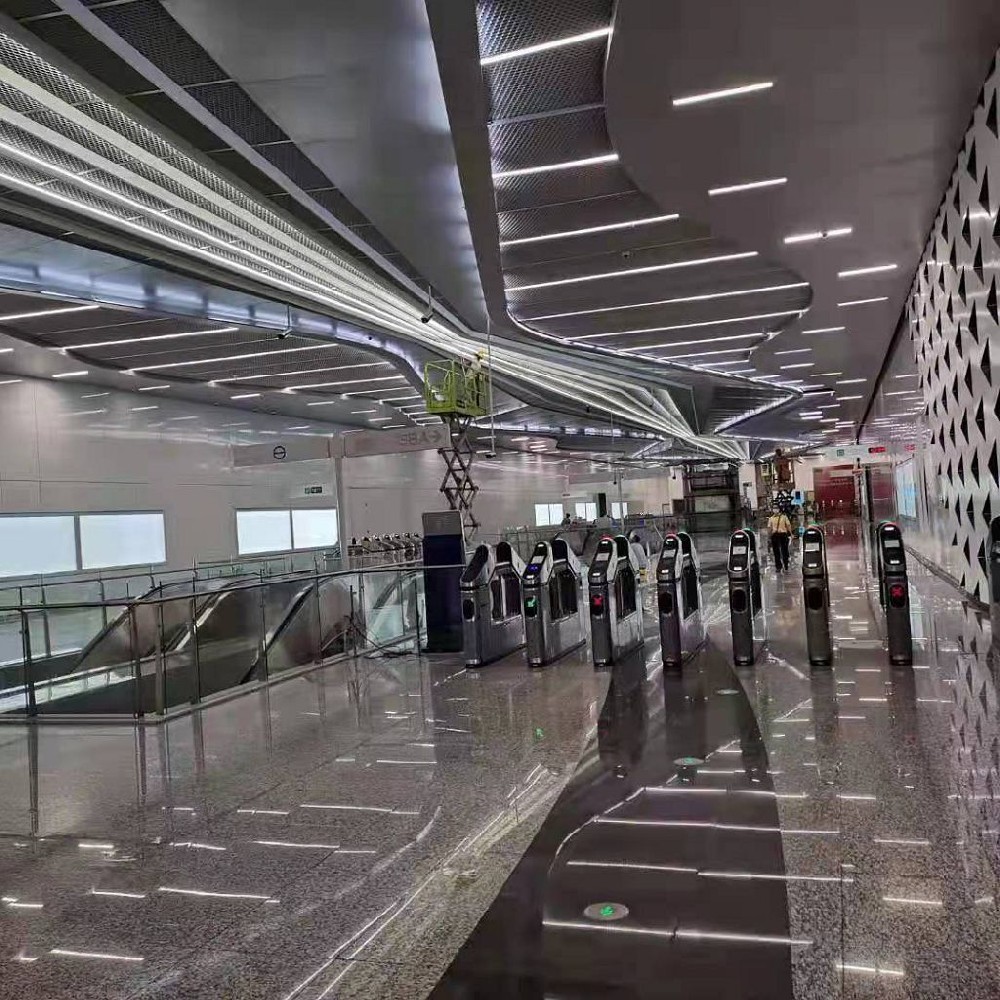According to incomplete statistics, China has built over 40 million square meters of curtain wall projects. From Beijing to the Special Economic Zone, from large and medium-sized coastal cities such as Shanghai to emerging cities in the west, beautiful urban streets can be seen everywhere with new building curtain wall decorations. With the rapid development of the industry, the third generation curtain wall material - porcelain veneered aluminum plate - has entered the construction market with its environmentally friendly characteristics, superior performance, and more attractive prices, covering the entire process from raw materials to production processes to maintenance and recycling.
Selection of raw materials for porcelain aluminum plates:
Coating is a green, non-toxic, and healthy coating - porcelain
The main components of porcelain aluminum plate are silicon and oxygen, and PFOA additives are not required in its manufacturing and production process. It is a completely green, non-toxic, and healthy coating.
The ceramic coating adopts the most advanced material research technology in the world - sol gel method, which not only realizes the low-temperature glazing of ceramic aluminum plates (about 180 ℃ × 20 min), and the inorganic material composite in the field of nanotechnology is realized through the sol gel technology, which overcomes the brittleness and toughness shortage of traditional ceramic materials.
The main components of porcelain fused to metal coatings are three-dimensional network inorganic resins and inorganic high-temperature resistant pigments formed by the condensation of nanoscale aluminum sol and silane alcohol. It can change the appearance and structure of the outer surface of the substrate, endowing it with new properties.
Porcelain coatings will not be aged by ultraviolet radiation, acid rain, car exhaust, and air pollution like organic coatings, exhibiting better anti-corrosion performance. They are a semi permanent material; The low surface energy of porcelain fused to metal coatings and the ability of inorganic materials to eliminate static electricity prevent them from adhering to atmospheric pollutants, maintaining a luxurious appearance and self-cleaning performance. The combination of porcelain fused to metal coatings, unique colors, excellent durability, semi permanence, pollution resistance, non flammability, and low-carbon environmental friendliness provides a new concept of architectural decoration materials for the new century.
The basic material is renewable material - aluminum
Choose aluminum, which can be recycled repeatedly.
At present, the world's annual production of primary aluminum is about 25 million tons, and the annual consumption of bauxite exceeds 100 million tons. Secondly, compared to the raw aluminum ingot produced by one ton of bauxite, the alloy aluminum ingot produced by one ton of waste and miscellaneous raw materials can save more than 95% of energy consumption.
According to relevant statistics, the energy consumption for producing 1 ton of raw aluminum ingots is 213.2TJ (electrical energy accounts for about 82%), while the energy consumption for producing 1 ton of recycled aluminum alloy ingots is 5.5TJ (fuel accounts for about 80%), which is only 2.6% of the energy consumption for producing raw aluminum ingots, showing a clear comparative advantage. Due to the repeated recycling of aluminum, the energy-saving effect is more significant when using recycled aluminum waste to regenerate aluminum.
In addition, compared to the production of raw aluminum, the amount of carbon dioxide and emissions in the production of porcelain aluminum plates are greatly reduced. According to statistics, the production of recycled aluminum reduces carbon dioxide emissions by 91% compared to the production of raw aluminum through hydropower, by more than 97% compared to oil fired power generation, and by more than coal-fired power generation.


